Three billion years ago, Earth was a very different place.
-
NAI 2015 Director’s Discretionary Fund (DDF) Selections
The NASA Astrobiology Institute is pleased to announce nine selections for the Director’s Discretionary Fund for 2015. The proposals were chosen based on responsiveness to the scientific and programmatic priorities for the year: integrating the research of and realizing synergies among the current NAI teams, support for early career investigators, and collaboration with our international partners.
Catalytic Diversity at the Emergence of Metabolism: Hydrothermal Carbon Dioxide Reduction on Fe/Ni-Sulfide Catalysts
Lead Investigator: Laura Barge (JPL Icy Worlds Team)
Co-Investigators: Pablo Sobron (SETI Institute Team), Michael Russell (JPL Icy Worlds Team), Yuichiro Ueno (Earth-Life Science Institute), Shawn McGlynn (Tokyo ...Source: [NASA Astrobiology Institute (NAI)]
January 15, 2016 • Written by: • Report issue
-
Nitrogen May Be a Sign of Habitability

About 78% of Earth’s atmosphere is made up of nitrogen. Credit: NASAWe might commonly think of Earth as having an oxygen-dominated atmosphere, but in reality the molecule makes up only a fifth of our air. Most of what surrounds us is nitrogen, at 78 percent. Astrobiologists are beginning to see nitrogen — and not just oxygen— as a key indicator of a planet’s habitability. Nitrogen is essential for life on Earth and could signal an atmosphere thick enough to stabilize liquid water on a planet’s surface, fundamental to creating habitable conditions.
Nitrogen, in fact, was even more abundant in Earth when volcanoes and other internal processes began replacing our planet ...
Source: [Astrobiology Magazine]
January 14, 2016 • Written by: Elizabeth Howell • Report issue
-
Life’s Rocky Start
Life’s Rocky Start aired on January 13 on PBS and is available for streaming: http://www.pbs.org/wgbh/nova/earth/life-rocky-start.html.
The program follows astrobiologist Robert Hazen as he looks for life in a mineralogical context, and features NAI University of Wisconsin team member John Valley and his research on Archean/Hadean zircons.
Source: [PBS]
January 13, 2016 • Written by: • Report issue
-
The 4th International ELSI Symposium Broadcasting Live
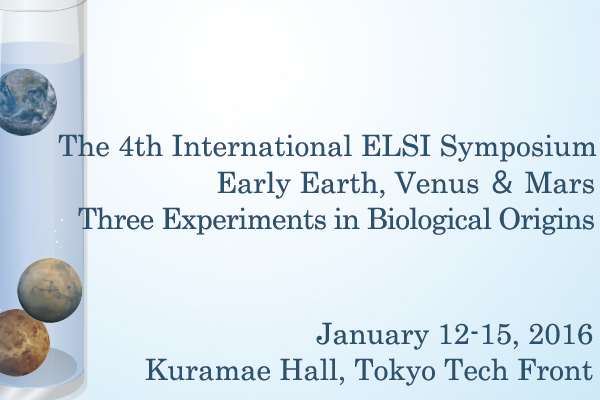
The 4th Earth-Life Science Institute (ELSI) International Symposium: Early Earth, Venus & Mars, taking place January 12-15 at the Tokyo Institute of Technology, is broadcasting live via SAGANLive!
For a full schedule of talks, visit: http://www.elsi.jp/en/research/activities/symposium/2016/01/sympo-04.html (times are JST).
About the symposium:
In the Solar System, Earth has alone managed to generate and maintain a large active biosphere whose existence greatly altered the subsequent chemical and physical evolution of the planet. Whether its nearest neighbours, Venus and Mars, were temporarily able to do this as well, or were ...Source: [Earth-Life Science Institute]
January 12, 2016 • Written by: • Report issue
-
Hunting Alternative Earths
Timothy Lyons, PI of the NAI Alternative Earths team at the University of California, Riverside, presents the study of Earth’s history being conducted by his team and shares how their research connects to the search for life on exoplanets.
The video was produced by UC Riverside, providing a glimpse of the lab and the people conducting the research.
Source: [University of California, Riverside]
January 10, 2016 • Written by: Miki Huynh • Report issue
-
Recap of the 2015 Western Australia Astrobiology Grand Tour

Overhead shot of Shark Bay. Source: ACA/UNSW.NASA Astrobiology Institute Field Trip Scholarship recipients Giada Arney, Marisol Juarez Rivera and Shaunna Morrison took part in the Western Australia Astrobiology Grand Tour, an eleven-day field trip where participants discovered the unique geography, molluscs and microbial life of Shark Bay, trekked through the iron-rich landscape of the Pilbara—analogous to Martian terrain—to study the banded iron formation of Mount Tom Price and ancient gorges of Karijini National Park, investigated fossils, camped under the stars, and more. The tour was led by Malcolm Walter, professor of astrobiology at the University of New South Wales (UNSW) and founding director of ...
Source: [NASA Astrobiology Institute (NAI)]
January 08, 2016 • Written by: Miki Huynh • Report issue
-
Seth Shostak Wins Prize for Science Popularization

Seth Shostak of the SETI Institute. Image source: FameLabSeth Shostak, senior astronomer at the SETI Institute, was announced as the recipient of the Wonderfest 2015 Carl Sagan Prize for Science Popularization, an award recognizing researchers who “have contributed mightily to the public understanding and appreciation of science.” Shostak has authored numerous articles and books and has been seen and heard on several television and radio programs. He is a well-known voice of the podcast, Big Picture Science, a weekly hour-long show that explores a diverse range of science topics that tie in to our understanding of life, the Earth and the universe.
The full press release is available ...
Source: [SETI Institute]
December 17, 2015 • Written by: Miki Huynh • Report issue
-
NAI Scientists Honored with Math and Chemistry Awards
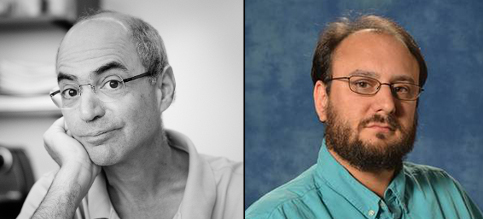
Daniel Rothman of MIT was honored with the AMS 2016 Levi L. Conant Prize. Jason Dworkin of GSFC was honored with 2015 Maryland Chemist Award. Image Credits: Rothman Group at MIT / NASA/GSFC.[Source: American Mathematical Society]
Daniel Rothman, a member of the NASA Astrobiology Institute MIT team, received the 2016 Levi L. Conant Prize of the American Mathematical Society for his article “Earth’s Carbon Cycle: A Mathematical Perspective” which appeared in the Bulletin of the AMS.
His paper explores the underlying mathematical structure of the carbon cycle and encourages mathematicians to see their role along with scientists in addressing climate and environmental changes. Rothman is a geophysicist, professor in the Department of Earth, Atmospheric, and Planetary Sciences at MIT and co-director of MIT’s Lorenz Center. The press release for the award ...
December 16, 2015 • Written by: Miki Huynh • Report issue
-
Astrobiology Graphic History Issue #5 at AGU

Issue #5 of the ongoing Astrobiology graphic history series dives into the study of life on Mars through analog locations found on Earth, with special appearances made by real life astrobiologists. The issue is available for download as both a high-resolution PDF and a PDF for mobile devices.
If you are attending AGU, don’t miss your chance to get physical copies of Astrobiology, the Search for Life in the Universe signed by series writer and illustrator Aaron Gronstal on December 14th 6-8pm and December 15th 11:30-1pm.
December 08, 2015 • Written by: Miki Huynh • Report issue
-
An Audiovisual Concert – Origins: Life and the Universe
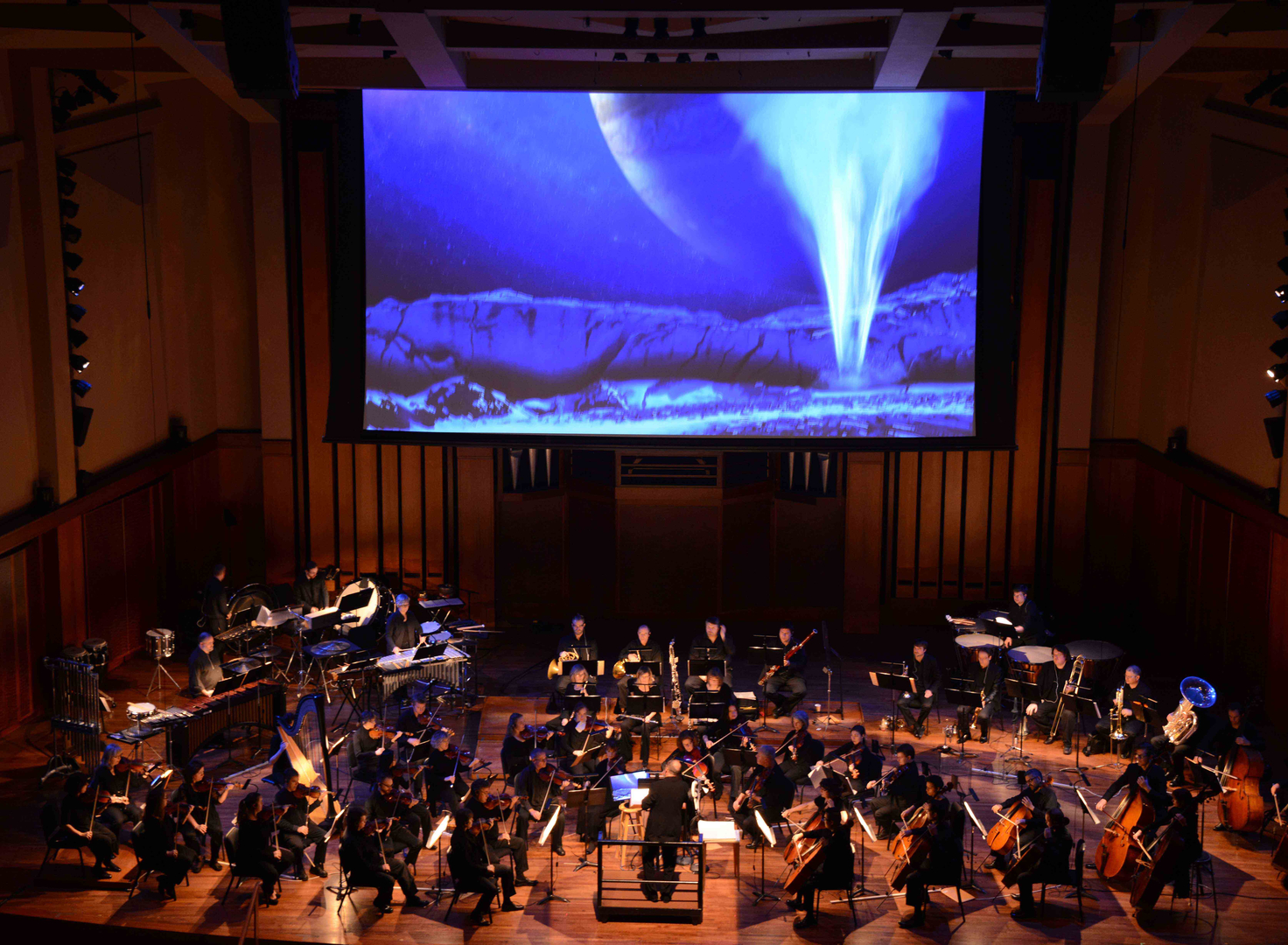
Performance of the Northwest Sinfonia Orchestra.On November 7, 2015, in Benaroya Hall, Seattle, Washington, an audiovisual concert was held paying tribute to some of the greatest discoveries made by astrobiologists, space scientists, and astronomers. The concert was a benefit for the scholarship program at the University of Washington Astrobiology Program and the Department of Astronomy and featured Grammy-award winning conductor David Sabee and the Northwest Sinfonia orchestra.
The symphonic concert was accompanied by projected high-resolution movies created using some of the most spectacular imagery, videos and conceptual art from the Hubble Space Telescope, NASA, the European Southern Observatory, the European Space Agency, and many other ...
December 07, 2015 • Written by: Julie Fletcher • Report issue
-
Astrobiology Sessions at the 2015 AGU Fall Meeting

The 2015 AGU Fall Meeting will take place December 14-18. We’ve compiled a cheat sheet schedule of this year’s astrobiology talks and poster sessions for easy downloading and printing out.
These events can also be conveniently scheduled and brought along using the AGU mobile app.
More information about AGU is available at their website: http://fallmeeting.agu.org/2015/.
December 07, 2015 • Written by: Miki Huynh • Report issue
-
The Search for the Origin of Life
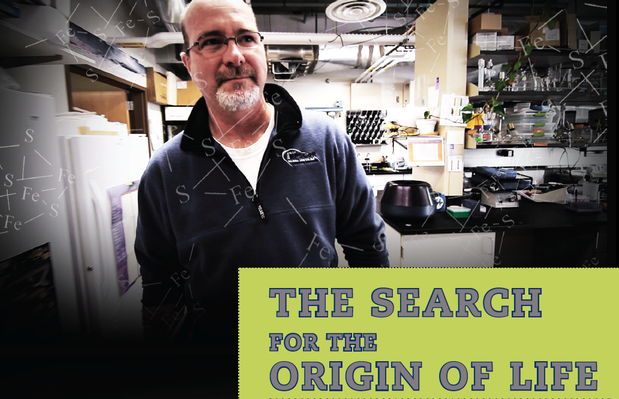
The Search for the Origin of Life, a documentary by Devon Riter and Daniel Schmidt, follows NASA Astrobiology Institute scientists as they explore the question: How did life on our planet begin? Their research takes them all around the globe and into extreme environments, from arctic glaciers to thermal hot springs to deep into caves. The program originally aired on PBS and is available for viewing through the Montana PBS website.
PBS LearningMedia provides teaching resources to accompany the program.
Source: [Montana PBS]
December 04, 2015 • Written by: Miki Huynh • Report issue
-
Recap of the Western Championship Tournament of the NASA Astrobiology Debates
The Western Championship Tournament of the NASA Astrobiology Debates series was held at the University of Washington, Seattle on October 17-18th. University debate teams from all over the country participated, including Central Michigan University, George Fox University, The George Washington University, Gonzaga University, Harvard University, MIT, Seattle University, US Air Force Academy, UC Berkeley, University of Texas, University of Washington, and Yale University. All teams worked with this topic: Resolved: An overriding ethical obligation to protect and preserve extraterrestrial microbial life and ecosystems should be incorporated into international law.
In the final, which was webcast live from Seattle on October ...
December 02, 2015 • Written by: Daniella Scalice • Report issue
-
Looking Back 3.8 Billion Years Into the Root of the “Tree of Life”

The ribosome grew by accretion of new RNA onto old RNA in a process reminiscent of nested Russian dolls. The most ancient part of the ribosome contains small RNA fragments and is represented by the smallest doll. Ever more recent additions to the ribosome increased its functionality, and are represented on dolls of increasing size. The largest doll displays the ribosomal RNA that is shared by all current forms of life.NASA-funded researchers at the Georgia Institute of Technology are tapping information in the cells of all life on Earth, and using it to trace life’s evolution. They have learned that life is a master stenographer; writing, rewriting, and recording its history in elaborate biological structures.
Some of the keys to unlocking the origin of life lie encrypted in the ribosome, life’s oldest and most universal molecule. Today’s ribosome converts genetic information (RNA) into proteins that carry out various functions in an organism. But the ribosome itself has changed over time. Its history shows how simple molecules ...
Source: [Georgia Tech]
November 30, 2015 • Written by: • Report issue
-
NAI Scientist Appointed Early Career Chair
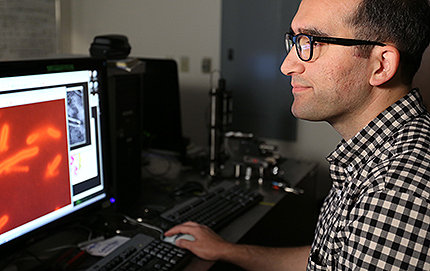
Moh El-Naggar, a member of the NAI Life Underground team at the University of Southern California has been appointed the first Robert D. Beyer Early Career Chair in Natural Sciences at USC.Moh El-Naggar, a member of the NAI Life Underground team at the University of Southern California has been appointed the first Robert D. Beyer Early Career Chair in Natural Sciences at USC. The appointment, designed specifically for early career scholars, enables the chair holders “to be risk takers because they now have an underpinning of support that gives them the freedom to do the extra work we really expect of great faculty,” says USC Provost Michael Quick.
El-Naggar heads the NanoBio Lab and is known as a pioneer in the area of energy conversion and charge transmission at the interface ...
Source: [University of Southern California]
November 20, 2015 • Written by: Miki Huynh • Report issue



